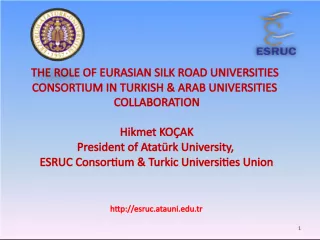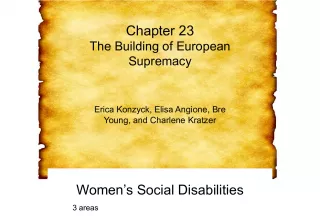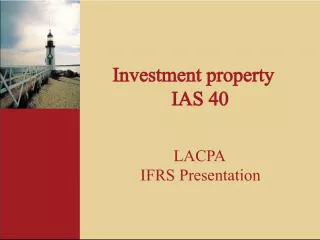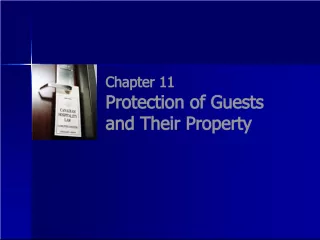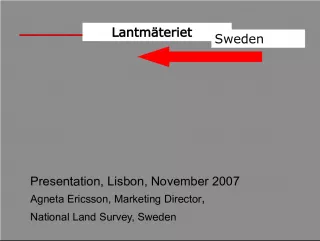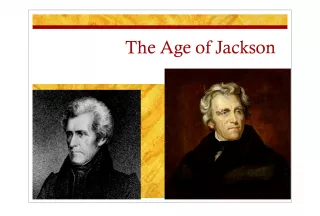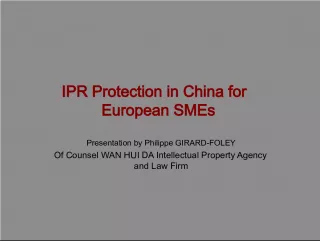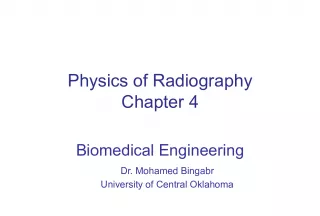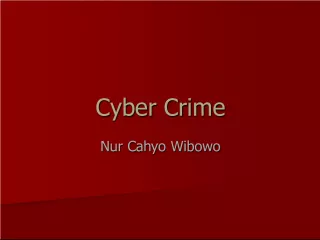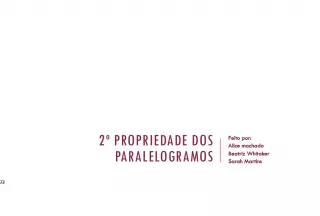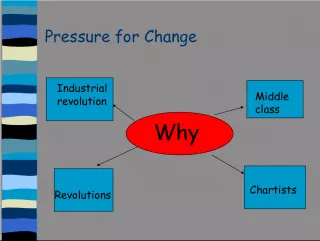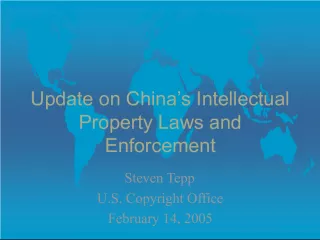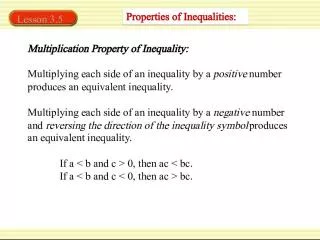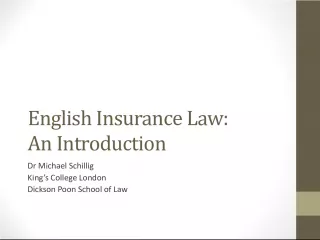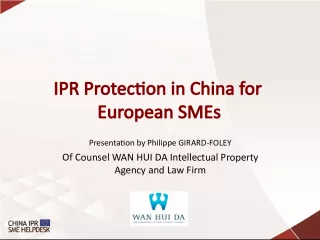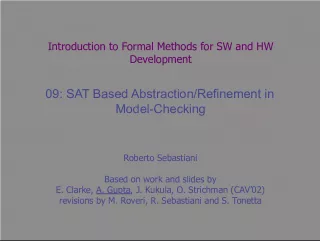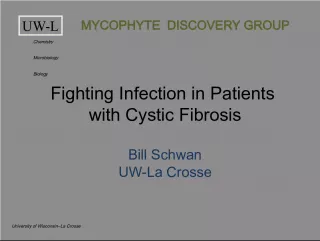EUCLID MAV Consortium Property Notice


This document belongs to the EUCLID MAV Consortium and may not be copied or shared without permission.
- Uploaded on | 3 Views
-
 matthewchen
matthewchen
About EUCLID MAV Consortium Property Notice
PowerPoint presentation about 'EUCLID MAV Consortium Property Notice'. This presentation describes the topic on This document belongs to the EUCLID MAV Consortium and may not be copied or shared without permission.. The key topics included in this slideshow are . Download this presentation absolutely free.
Presentation Transcript
Slide1Page 1This document is the property of the EUCLID 3MAV Consortium ; no part of it shall be reproduced or transmitted without the express prior written authorisation of its members , and its contents shall not be disclosed. CNFRS 25 /0 2 /200 5 Utilisation de la méthode multipôle rapide pour les calculs de SER d’objets de grande taille Guillaume SYLVAND (guillaume.sylvand@eads.net) EADS CCR – DCR/EX/HP - Toulouse
Slide2Page 2This document is the property of the EUCLID 3MAV Consortium ; no part of it shall be reproduced or transmitted without the express prior written authorisation of its members , and its contents shall not be disclosed. CNFRS 25 /0 2 /200 5 Problème électromagnétique • Equations de Maxwell dans le domaine fréquentiel • Equations intégrales discrétisées par des éléments finis de frontière. • Applications : compatibilité électromagnétique , conception d’antenne , furtivite, etc.
Slide3Page 3This document is the property of the EUCLID 3MAV Consortium ; no part of it shall be reproduced or transmitted without the express prior written authorisation of its members , and its contents shall not be disclosed. CNFRS 25 /0 2 /200 5 Méthode numérique
Slide4Page 4This document is the property of the EUCLID 3MAV Consortium ; no part of it shall be reproduced or transmitted without the express prior written authorisation of its members , and its contents shall not be disclosed. CNFRS 25 /0 2 /200 5 Méthode d’éléments finis • Maillage de frontière en triangles • Eléments finis de Raviart-Thomas (les inconnues sont portées par les arêtes) • Système linéaire a résoudre : complexe, symétrique, plein. • Les méthodes directes sont trop coûteuses lorsque le nombre d’inconnues n croît : O(n 3 ) operations. • Solution : Utiliser un solveur itératif en conjonction avec un produit matrice-vecteur rapide
Slide5Page 5This document is the property of the EUCLID 3MAV Consortium ; no part of it shall be reproduced or transmitted without the express prior written authorisation of its members , and its contents shall not be disclosed. CNFRS 25 /0 2 /200 5 La méthode FMM • La méthode multipôle rapide (Rokhlin et Greengard, 1985). En France : thèse de Darve (98). • Une nouvelle manière de calculer des produits matrice-vecteur de manière rapide mais approchée. Ne s’utilise qu’en conjonction avec un solveur itératif (GMRES, QMR). • Rapide : le temps CPU croît comme n.log(n) au lieu de n 2 pour un produit matrice-vecteur classique. Devient rentable a partir de quelques milliers d’inconnues. • Approché : la FMM introduit un écart relatif de l’ordre de 10 -3 10 -4 par rapport à un produit matrice-vecteur exact.
Slide6Page 6This document is the property of the EUCLID 3MAV Consortium ; no part of it shall be reproduced or transmitted without the express prior written authorisation of its members , and its contents shall not be disclosed. CNFRS 25 /0 2 /200 5 Décomposition du noyau de Green
Slide7Page 7This document is the property of the EUCLID 3MAV Consortium ; no part of it shall be reproduced or transmitted without the express prior written authorisation of its members , and its contents shall not be disclosed. CNFRS 25 /0 2 /200 5 Décomposition du noyau de Green • Intérêt de la formule : diminuer le nombre d’interactions à calculer entre points « distants » • Sans FMM : • Avec FMM :
Slide8Page 8This document is the property of the EUCLID 3MAV Consortium ; no part of it shall be reproduced or transmitted without the express prior written authorisation of its members , and its contents shall not be disclosed. CNFRS 25 /0 2 /200 5 La méthode mono-niveau • Basée sur un découpage 3D de l’objet • Interactions entre boîtes voisines : traitées classiquement • Entre boîtes non-voisines : avec la décomposition de du noyau de Green • FMM 1 niveau : O(n 3/2 )
Slide9Page 9This document is the property of the EUCLID 3MAV Consortium ; no part of it shall be reproduced or transmitted without the express prior written authorisation of its members , and its contents shall not be disclosed. CNFRS 25 /0 2 /200 5 La méthode multi-niveau • Approche “divide and conquer” à la quicksort ou FFT pour obtenir un algo en n.log(n) • Base sur un découpage 3D récursif de l’objet
Slide10Page 10This document is the property of the EUCLID 3MAV Consortium ; no part of it shall be reproduced or transmitted without the express prior written authorisation of its members , and its contents shall not be disclosed. CNFRS 25 /0 2 /200 5 La méthode multi-niveau • Crée une structure d’arbre (octree) avec ces différents découpages • A chaque niveau, on a une FMM mono-niveau. • La FMM multi-niveau = faire travailler conjointement ces différentes FMM mono-niveau pour obtenir l’algorithme le plus efficace.
Slide11Page 11This document is the property of the EUCLID 3MAV Consortium ; no part of it shall be reproduced or transmitted without the express prior written authorisation of its members , and its contents shall not be disclosed. CNFRS 25 /0 2 /200 5 La méthode multi-niveau • Quelles interactions sont prises en compte à chaque niveau :
Slide12Page 12This document is the property of the EUCLID 3MAV Consortium ; no part of it shall be reproduced or transmitted without the express prior written authorisation of its members , and its contents shall not be disclosed. CNFRS 25 /0 2 /200 5 Objet 1 : Voiture C5 (Source PSA) • On calcule les courants surfaciques et le champ proche générés par une antenne placée sur le toit d’une voiture de type Citroën C5. • Complexité : Degrés de liberté : 189.803 Sommets : 62.757 Éléments : 126.302 • Maillage en lambda/6. • Matériau : objet parfaitement conducteur placé dans le vide. • L’antenne est un fil portant un générateur à 1750 MHz. • Un plan de sol parfaitement conducteur est placé sous le véhicule.
Slide13Page 13This document is the property of the EUCLID 3MAV Consortium ; no part of it shall be reproduced or transmitted without the express prior written authorisation of its members , and its contents shall not be disclosed. CNFRS 25 /0 2 /200 5 Objet 1 : Voiture C5 ( Source PSA)
Slide14Page 14This document is the property of the EUCLID 3MAV Consortium ; no part of it shall be reproduced or transmitted without the express prior written authorisation of its members , and its contents shall not be disclosed. CNFRS 25 /0 2 /200 5 Champ proche diffracté (65 000 Points)
Slide15Page 15This document is the property of the EUCLID 3MAV Consortium ; no part of it shall be reproduced or transmitted without the express prior written authorisation of its members , and its contents shall not be disclosed. CNFRS 25 /0 2 /200 5 Performances • Environnement matériel : 4 lames bi-Opteron 250 (2.4 GHz, 1 Mb cache), 4 Gb RAM, 70 Go Disque • Code Itératif multipôle (8 processeurs) : Solveur GMRES, 100 itérations, préconditionneur SPAI, convergence à 0.01 Temps réel : 27 minutes • Calcul du champ proche : 107 minutes • Solveur direct sur une Origin 3800, 64 processeurs : 4 jours.
Slide16Page 16This document is the property of the EUCLID 3MAV Consortium ; no part of it shall be reproduced or transmitted without the express prior written authorisation of its members , and its contents shall not be disclosed. CNFRS 25 /0 2 /200 5 Objet 2 : Cavité cobra • On calcule la SER monostatique d’une cavité représentant une entrée d’air. • Complexité : Degrés de liberté : 179.460 Sommets : 60.276 Éléments : 119.868 • Maillage en lambda/8. • Matériau : objet parfaitement conducteur placé dans le vide. • On considère 902 seconds membres (theta=0 à 90 par pas de 0.2, polar theta et phi)
Slide17Page 17This document is the property of the EUCLID 3MAV Consortium ; no part of it shall be reproduced or transmitted without the express prior written authorisation of its members , and its contents shall not be disclosed. CNFRS 25 /0 2 /200 5 Objet 2 : Cavité cobra
Slide18Page 18This document is the property of the EUCLID 3MAV Consortium ; no part of it shall be reproduced or transmitted without the express prior written authorisation of its members , and its contents shall not be disclosed. CNFRS 25 /0 2 /200 5 Objet 2 : Cavité cobra
Slide19Page 19This document is the property of the EUCLID 3MAV Consortium ; no part of it shall be reproduced or transmitted without the express prior written authorisation of its members , and its contents shall not be disclosed. CNFRS 25 /0 2 /200 5 Performances • Environnement matériel : 4 PC bi-pentium 4 (2 GHz), 2 Gb RAM, 30 Go Disque • Code Itératif multipôle (8 processeurs) : Solveur BlockGCR, 120 itérations, préconditionneur SPAI, convergence à 0.001 Temps total : 15 heures • Intérêt de ce calcul : C’est la « pire » configuration possible pour un solveur itératif FMM : • Beaucoup de RHS (pas terrible pour solveur itératif) • Cavité (implique beaucoup d’itérations pour converger) Et pourtant le code FMM converge sans difficulté !
Slide20Page 20This document is the property of the EUCLID 3MAV Consortium ; no part of it shall be reproduced or transmitted without the express prior written authorisation of its members , and its contents shall not be disclosed. CNFRS 25 /0 2 /200 5 Objet 3 : Coated cône sphère • On calcule la SER monostatique d’un cône sphère. • Complexité : Degrés de liberté : 77.604 Sommets : 16.840 Éléments : 33.672 • Maillage en lambda/10 (pour le milieu d’indice le plus élevé) • Matériau : objet parfaitement conducteur + couche de diélectrique absorbant (epsilon=15+1.8i mu=1) placé dans le vide. • On considère 362 seconds membres (theta=0 à 180 par pas de 1, polar theta et phi) à 3GHz
Slide21Page 21This document is the property of the EUCLID 3MAV Consortium ; no part of it shall be reproduced or transmitted without the express prior written authorisation of its members , and its contents shall not be disclosed. CNFRS 25 /0 2 /200 5 Objet 3 : Coated cône sphère
Slide22Page 22This document is the property of the EUCLID 3MAV Consortium ; no part of it shall be reproduced or transmitted without the express prior written authorisation of its members , and its contents shall not be disclosed. CNFRS 25 /0 2 /200 5 Objet 3 : Coated cône sphère
Slide23Page 23This document is the property of the EUCLID 3MAV Consortium ; no part of it shall be reproduced or transmitted without the express prior written authorisation of its members , and its contents shall not be disclosed. CNFRS 25 /0 2 /200 5 Performances • Environnement matériel : 8 PC bi-pentium 4 (2 GHz), 2 Gb RAM, 30 Go Disque • Code Itératif multipôle (16 processeurs) : Solveur BlockGCR, 60 itérations, préconditionneur SPAI, convergence à 0.001 Temps total : 2.5 heures
Slide24Page 24This document is the property of the EUCLID 3MAV Consortium ; no part of it shall be reproduced or transmitted without the express prior written authorisation of its members , and its contents shall not be disclosed. CNFRS 25 /0 2 /200 5 Objet 4 : Cobra + Fuselage • On calcule la SER bistatique d’un missile comportant une cavité représentant une entrée d’air. • Complexité : Degrés de liberté : 1.212.867 Sommets : 404.227 Éléments : 808546 • Maillage en lambda/8. • Longueur totale = 70 lambda • Matériau : objet parfaitement conducteur placé dans le vide. • On considère 1 seconds membres (theta=70 et phi=0) qui illumine dans l’axe de la cavité
Slide25Page 25This document is the property of the EUCLID 3MAV Consortium ; no part of it shall be reproduced or transmitted without the express prior written authorisation of its members , and its contents shall not be disclosed. CNFRS 25 /0 2 /200 5 Objet 4 : Cobra + Fuselage
Slide26Page 26This document is the property of the EUCLID 3MAV Consortium ; no part of it shall be reproduced or transmitted without the express prior written authorisation of its members , and its contents shall not be disclosed. CNFRS 25 /0 2 /200 5 Objet 4 : Cobra + Fuselage
Slide27Page 27This document is the property of the EUCLID 3MAV Consortium ; no part of it shall be reproduced or transmitted without the express prior written authorisation of its members , and its contents shall not be disclosed. CNFRS 25 /0 2 /200 5 Performances • Environnement matériel : 4 lames bi-Opteron 250 (2.4 GHz, 1 Mb cache), 4 Gb RAM, 70 Go Disque • Code Itératif multipôle (8 processeurs) : Solveur GMRES, 100 itérations, préconditionneur SPAI, convergence à 0.02 Temps réel : 70 minutes • Solveur direct : irréalisable
Slide28Page 28This document is the property of the EUCLID 3MAV Consortium ; no part of it shall be reproduced or transmitted without the express prior written authorisation of its members , and its contents shall not be disclosed. CNFRS 25 /0 2 /200 5 Conclusions • La FMM a été implémentée dans le logiciel ASERIS, et un effort significatif est réalisé pour amener cette solution a l’étape industrielle • Les problèmes comportant des fils et des diélectriques absorbant sont traités. • Des solveurs (block, flexible, GMRES) et des précondionneurs (SPAI) adaptés ont été développés. • On résout des problèmes de complexité “industrielle” a plusieurs millions d’inconnues
Slide29Page 29This document is the property of the EUCLID 3MAV Consortium ; no part of it shall be reproduced or transmitted without the express prior written authorisation of its members , and its contents shall not be disclosed. CNFRS 25 /0 2 /200 5 Perspectives • La FMM est une méthode puissante qui accélère une méthode reconnue (méthode des moments) • Code parallélisé permettant de traiter des cas de grande taille (plusieurs millions d’éléments) sur machine parallèle et cluster de PC (mémoire distribuée) • Recherche et développement continuent autour de ces méthodes • Effort sur la validation et l’industrialisation de la méthode pour toutes les applications (EMC, furtivité, etc.)
